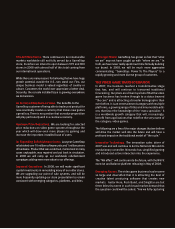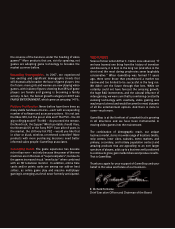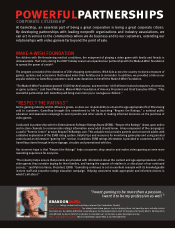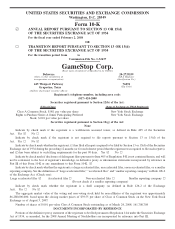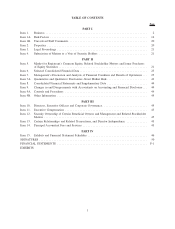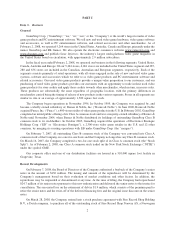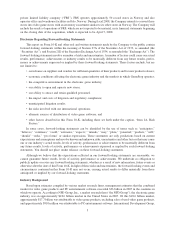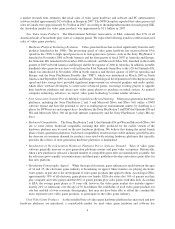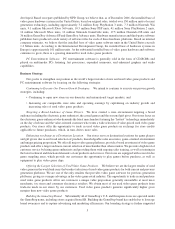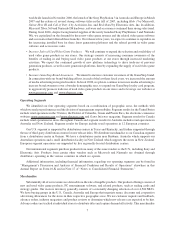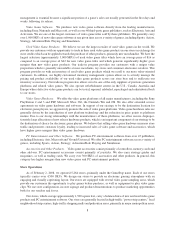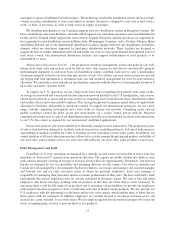GameStop 2007 Annual Report Download - page 17
Download and view the complete annual report
Please find page 17 of the 2007 GameStop annual report below. You can navigate through the pages in the report by either clicking on the pages listed below, or by using the keyword search tool below to find specific information within the annual report.
PART I
Item 1. Business
General
GameStop Corp. (“GameStop,” “we,” “us,” “our,” or the “Company”) is the world’s largest retailer of video
game products and PC entertainment software. We sell new and used video game hardware, video game software
and accessories, as well as PC entertainment software, and related accessories and other merchandise. As of
February 2, 2008, we operated 5,264 stores in the United States, Australia, Canada and Europe, primarily under the
names GameStop and EB Games. We also operate the electronic commerce websites www.gamestop.com and
www.ebgames.com and publish Game Informer, the industry’s largest multi-platform video game magazine in
the United States based on circulation, with approximately 2.9 million subscribers.
In the fiscal year ended February 2, 2008, we operated our business in the following segments: United States,
Canada, Australia and Europe. Of our 5,264 stores, 4,061 stores are included in the United States segment and 287,
280 and 636 stores are included in the Canadian, Australian and European segments, respectively. Each of the
segments consists primarily of retail operations, with all stores engaged in the sale of new and used video game
systems, software and accessories which we refer to as video game products and PC entertainment software and
related accessories. Our used video game products provide a unique value proposition to our customers, and our
purchasing of used video game products provides our customers with an opportunity to trade in their used video
game products for store credits and apply those credits towards other merchandise, which in turn, increases sales.
These products are substantially the same regardless of geographic location, with the primary differences in
merchandise carried being the timing of release of new products in the various segments. Stores in all segments are
similar in size at an average of approximately 1,500 square feet each.
The Company began operations in November 1996. In October 1999, the Company was acquired by, and
became a wholly-owned subsidiary of, Barnes & Noble, Inc. (“Barnes & Noble”). In June 2000, Barnes & Noble
acquired Funco, Inc. (“Funco”), a 400-store retailer of video game products in the U.S. In February 2002, GameStop
completed an initial public offering of its Class A common stock and was a majority-owned subsidiary of Barnes &
Noble until November 2004, when Barnes & Noble distributed its holdings of outstanding GameStop Class B
common stock to its stockholders. In October 2005, GameStop acquired the operations of Electronics Boutique
Holdings Corp. (“EB” or “Electronics Boutique”), a 2,300-store video game retailer in the U.S. and 12 other
countries, by merging its existing operations with EB under GameStop Corp. (the “mergers”).
On February 7, 2007, all outstanding Class B common stock of the Company was converted into Class A
common stock of the Company on a one-for-one basis and the Company no longer has any Class B common stock.
On March 16, 2007, the Company completed a two-for-one stock split of its Class A common stock (the “Stock
Split”). As of February 2, 2008, our Class A common stock traded on the New York Stock Exchange (“NYSE”)
under the symbol GME.
Our corporate office and one of our distribution facilities are housed in a 510,000 square foot facility in
Grapevine, Texas.
Recent Developments
On February 7, 2008, the Board of Directors of the Company authorized a buyback of the Company’s senior
notes in the amount of $130 million. The timing and amount of the repurchases will be determined by the
Company’s management based on their evaluation of market conditions and other factors. In addition, the
repurchases may be suspended or discontinued at any time. At the time of filing, the Company had repurchased
$24.7 million of its senior notes pursuant to this new authorization and delivered the senior notes to the trustee for
cancellation. The associated loss on the retirement of debt is $1.9 million, which consists of the premium paid to
retire the senior notes and the write-off of the deferred financing fees and the original issue discount on the senior
notes.
On March 28, 2008, the Company entered into a stock purchase agreement with Free Record Shop Holding
B.V., a Dutch company, to purchase all of the outstanding stock of Free Record Shop Norway AS, a Norwegian
2


